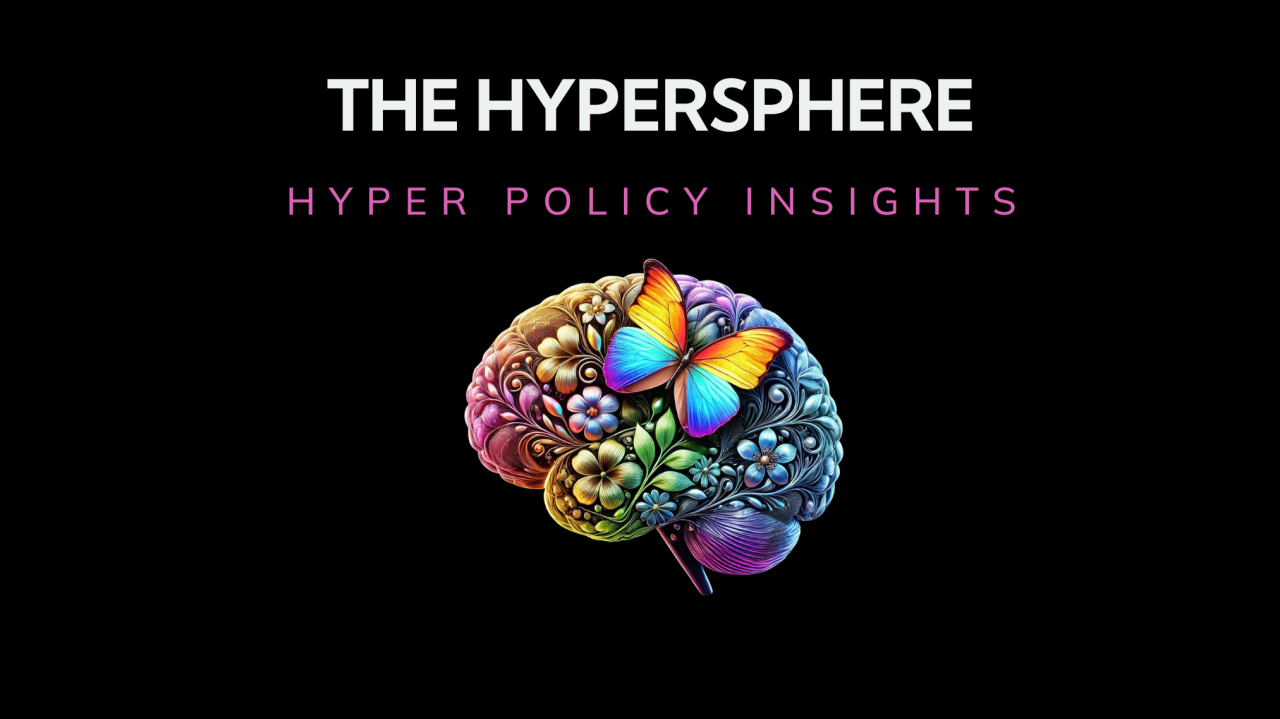Introduction
The fusion of Artificial Intelligence with the Metaverse and Spatial Computing represents a monumental shift in how humans interact with technology and the environment. This convergence is paving the way for Immersive Intelligence, where virtual and physical realities blend seamlessly, creating experiences that were once the escapes of science fiction. The integration of these technologies holds transformative potential across industries, promising innovations in communication, education, commerce, and beyond. As we stand on the cusp of this new era, it is essential to understand the implications of this fusion, especially in the context of changing regulatory fields. With anticipated reductions in federal oversight in the United States, particularly under the forthcoming administration, there is an urgent need to address the opportunities and challenges that this technological advancement presents.
The Metaverse is evolving into a complex, interconnected network of virtual spaces where users can interact with virtual environments and each other in real-time. Spatial Computing enhances this by enabling technology to perceive and interpret the physical world, allowing for more natural and intuitive interactions. AI acts as the catalyst that brings intelligence to these environments, facilitating personalized experiences, predictive capabilities, and adaptive systems that respond to user behaviors and preferences. This triad of technologies is set to redefine this space, offering unprecedented possibilities for innovation and growth.
However, the accelerated development and deployment of these technologies raise significant concerns regarding privacy, security, and ethical considerations. The ability of AI-powered systems to collect and analyze vast amounts of personal data within immersive environments poses risks that cannot be overlooked. As federal regulations may become less stringent, the responsibility to address these issues increasingly falls on state governments, local authorities, and industry stakeholders. Understanding the full scope of these technologies is imperative for crafting policies that protect individuals and society while inspiring innovation.
Focus
The primary focus is to explore the impact that integrating AI with the Metaverse and Spatial Computing will have on various sectors and to highlight the urgency of proactive policy development at the state and local levels. This integration is not just a technological advancement; it represents a paradigm shift in human-computer interaction. Industries such as education, healthcare, retail, and entertainment are poised to undergo significant transformations.
In education, immersive technologies can create dynamic learning environments where students engage with content in interactive ways. Virtual classrooms can simulate historical events, scientific phenomena, or complex mathematical concepts, enhancing comprehension and retention. AI can personalize these experiences, adapting to individual learning styles and pacing.
The retail sector can leverage these technologies to revolutionize the shopping experience. Virtual stores in the Metaverse allow consumers to browse and purchase products in interactive settings, trying on virtual clothing or testing products before buying. AI enhances this by analyzing consumer preferences and behaviors to provide personalized recommendations and streamline the shopping process.
In healthcare, Spatial Computing and AI can improve patient outcomes through advanced diagnostics, surgical simulations, and remote treatments. Medical professionals can train in virtual environments that replicate real-world scenarios, reducing risks and improving skills. Patients can benefit from personalized care plans developed through AI analysis of medical data within immersive settings.
The entertainment industry stands to gain significantly, with possibilities ranging from interactive gaming experiences to virtual concerts and social events. AI can create dynamic narratives that evolve based on user interactions, offering unique experiences each time.
As federal oversight diminishes, states have the opportunity, and responsibility, to take the lead in regulating these emerging technologies. This focus includes understanding how state-level policies can encourage innovation while addressing potential risks. By examining the applications and implications of integrating AI with the Metaverse and Spatial Computing, stakeholders can make informed decisions that balance progress with protection.
Concern
Despite the immense potential, several concerns arise from the integration of AI with immersive technologies, especially in a terrain of reduced federal regulation. One major issue is the potential erosion of privacy. AI systems within the Metaverse can collect detailed personal data, including biometric information, behavioral patterns, and even emotional responses. Without robust protections, this data could be misused for surveillance, identity theft, or manipulation.
Security vulnerabilities present another significant concern. As more activities and transactions occur within virtual environments, they become targets for cyberattacks. Hackers could exploit weaknesses to steal personal information, disrupt services, or spread misinformation. The complexity of these systems makes securing them a challenging task, requiring constant vigilance and advanced security measures.
Ethical considerations are paramount. The immersive nature of these technologies can blur the lines between reality and the virtual world, potentially impacting mental health and social relationships. There is a risk of addiction, as users may prefer virtual experiences over real-life interactions. Additionally, AI-driven content can manipulate perceptions and behaviors subtly, raising questions about consent and autonomy.
The anticipated reduction in federal oversight exacerbates these concerns. Without comprehensive federal regulations, there may be inconsistencies in how these technologies are governed across different states. This patchwork approach can lead to gaps in protection, where some users are more vulnerable depending on their location. It also creates challenges for companies operating nationwide, as they must negotiate varying legal requirements.
Furthermore, the pace of technological advancement may outstrip the ability of state and local governments to respond effectively. Limited resources and expertise can hinder the development and enforcement of appropriate regulations. There is a risk that the lack of oversight will enable the proliferation of untested or unsafe technologies, potentially causing harm to users and undermining public trust.
Proposed Action
To address these concerns, Hyper Policy believes that a coordinated effort is required at the state and local levels, involving policymakers, industry leaders, technologists, and the broader community. States should prioritize the development of comprehensive regulations that address privacy, security, and ethical use of AI-integrated immersive technologies. This includes crafting laws that mandate transparency in data collection and usage, requiring companies to disclose how personal information is gathered, stored, and shared.
Establishing strict data protection standards is essential. States can implement measures that require companies to adopt robust encryption, regular security audits, and response protocols for data breaches. Penalties for non-compliance should be significant enough to deter negligence and encourage proactive security practices.
Ethical guidelines must be developed to govern the creation and deployment of AI-driven content within the Metaverse. This involves setting standards for consent, particularly in how AI interacts with users and influences their experiences. Regulators should work with experts in psychology, sociology, and ethics to understand the potential impacts and establish safeguards against manipulation and harm.
Investment in education and training is crucial. States can support programs that build expertise in emerging technologies among government officials, law enforcement, and the judiciary. This knowledge base will enable more effective regulation and enforcement. Public awareness campaigns can inform citizens about the benefits and risks of immersive technologies, empowering them to make informed choices.
Encouraging collaboration between states can lead to more consistent regulations and shared best practices. Multi-state compacts or agreements can help harmonize laws, making it easier for companies to comply and for protections to be uniformly applied. Engaging with federal agencies, even as their role diminishes, can provide additional support and resources.
Industry self-regulation should also be promoted. Companies can develop and adhere to codes of conduct that prioritize user safety and ethical considerations. Transparency reports, third-party audits, and public commitments to responsible practices can build trust with users and regulators.
Finally, inspiring innovation while ensuring safety requires a delicate balance. States can create regulatory sandboxes where companies can test new technologies under supervision, allowing for experimentation without compromising public welfare. Incentives such as grants or tax breaks can encourage companies to invest in security and ethical design.
By taking these actions, states can fill the regulatory void left by reduced federal oversight, protecting citizens while allowing the transformative potential of AI-integrated immersive technologies to flourish. Proactive and thoughtful policymaking will be essential to better understanding and operating within this complex ecosystem, making sure that the integration of AI with the Metaverse and Spatial Computing benefits all members of society.
The HyperSphere: HyperPolicy Insights is a series of focused, concise analyses on the latest advancements, ethical challenges, and policy developments surrounding emerging technologies, artificial intelligence (AI), the Metaverse, and responsible innovation. It aims to provide thought leadership and actionable insights to guide the ethical use of technology in an increasingly accelerated and complex landscape.

